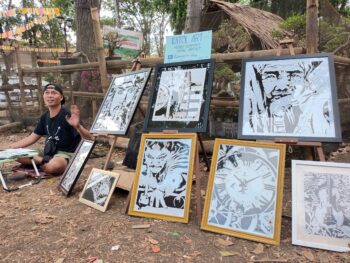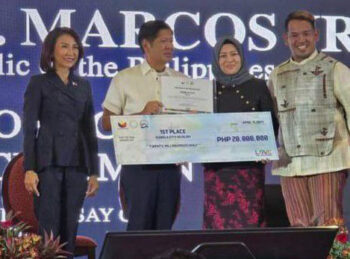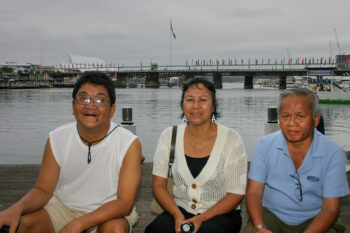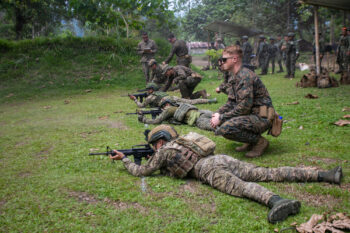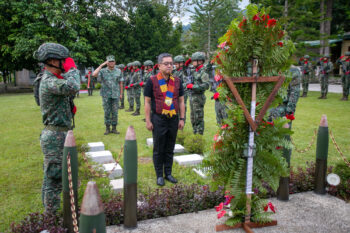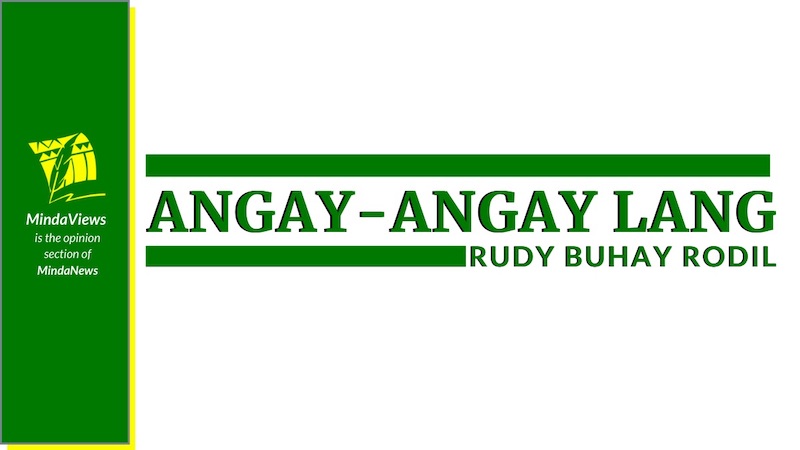
3rd of 18 parts
Rudy B. Rodil
(This is a revised version of the book “KALINAW MINDANAW: The Story of the GRP-MNLF Peace Process, 1975-1996” published in 2000)
Cost of the War
In a privilege speech he delivered in the House of Representatives in July 1996, Congressman Eduardo Ermita, who was vice chair of the GRP Peace Negotiating Panel and earlier spent a larger part of his military career in Mindanaw, cited the staggering cost of the war:
“Available data from the Armed forces of the Philippines indicate that over a period of 26 years since 1970, more than 100,000 persons were killed in the conflict in southern Philippines. The government suffered about 30 percent of casualties; the rebels more than 50 percent; while civilians caught in the crossfire came to about 20 percent of total casualties. About 55,000 persons were wounded, not counting those from the rebel side. From 1970 to 1976 alone, an average of 18 people were slain every day.
“All in all, the AFP has spent about 73 billion pesos in connection with the Mindanaw conflict since 1970; or an average of 40 percent of its annual budget. If this figure could be multiplied by the inflation rate over the years, it is truly a gargantuan expense. Presently, about 30 percent of the budget of the Philippine Air Force is spent in Mindanaw; so is 40 percent of our Naval budget and 60 percent of our Army budget.”
OIC as Mediator
We asked Ambassador Pangandaman two interrelated questions regarding the OIC: How did the OIC get into the picture? When did they become mediator? He replied:
“Because of the propaganda of the MNLF. It really registered in their minds that there is genocide going on in the Philippines… As if the Philippine government was engaged in ethnic cleansing.
“So, during the fighting between the secessionist movement and the government, there was the … mosques burned, the Holy Qur’an was desecrated, bodies mutilated, etc… So, these were evidences presented by the MNLF in the Middle East showing that the government was engaged in ethnic cleansing.
“That was how they got in… They became mediator after … the Philippine government realized that some of these countries, especially the radical ones, were giving aid to the local rebels.”
Pangandaman stressed that the government wanted to talk to the rebels and their supporters. But talking to the MNLF was not possible that time; the OIC was the only body that the MNLF were leaders were willing to listen to.
What was the situation on the side of the MNLF? We do not know for sure and nobody is talking, not yet anyway. It could be that the MNLF was pressured by the OIC. It could also be that the war had caused untold destruction to all concerned. But perhaps we can get some clue from the destructive results of the war cited earlier. It cuts both ways, of course.
It would seem indeed that the OIC provided the escape valve for the two parties. It presented itself as mediator, but, as we shall see, it also took an active role in the actual process itself.
The OIC institutionalized its involvement in the affairs of the Muslims of Mindanaw when at the 4th ICFM in Benghazi, Libya on March 24-26, 1973, the assembly constituted the Quadripartite Ministerial Committee (QMC) with Saudi Arabia, Libya, Senegal and Somalia as members. Its mandate was to look into the conditions of the Muslims in Southern Philippines. From this time on, the reports of the QMC served as the bases for the adoption of ICFM resolutions touching on the Muslims of Southern Philippines.
In 1974, the OIC passed Resolution No. 18 – the most crucial of all its resolutions on the Philippine Muslims – urging upon all parties “a political and peaceful solution through negotiation with Muslim leaders, particularly with the representative of the Moro National Liberation Front in order to arrive at a just solution to the plight of the Filipino Muslims within the framework of the national sovereignty and territorial integrity of the Philippines.” Item 9 of the resolution requests the Secretary – General in consultation with the four Foreign Ministers “to take steps to discuss with the Philippine Government the modalities and terms of cooperation in the work of the Agency.” Thus, Hassan Al-Tohamy, the OIC Secretary -General, made three visits to Manila, two in September 1974 and another one shortly afterwards, to make final arrangements for the meeting between the Philippine Government and the MNLF. At that time, Tohamy was very optimistic that both parties could arrive at an agreement.
From this date on, the OIC stood by this position. After the signing of the Tripoli Agreement, the only modification it added, especially after it seemed that the accord would never be implemented, was to call on the two parties to implement the agreement in letter and spirit.
(MindaViews is the opinion section of MindaNews. A peace specialist, Rudy Buhay Rodil is an active Mindanao historian and peace advocate)
Tomorrow: First Contact, Touching Base


